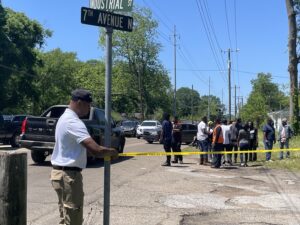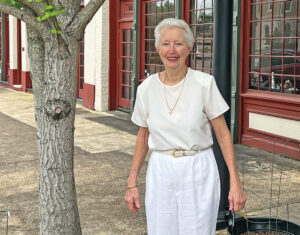Greenfield Environmental Trust Group Director of Environmental Programs Lauri Gorton, along with other officials in charge of the clean-up at the Kerr-McGee property in the Memphistown area of Columbus reported Tuesday a major milestone has been reached.
Since 2018, contaminated soil from the creosote plant that had operated on the 91-acre site for 75 years has been trucked off the property.
On Tuesday, officials from the Environmental Protection Agency, Mississippi Department of Environmental Quality and the Greenfield Multistate Trust said soil removal on the site, as well as soil from 11 residences adjacent to the property has ended.
The site was declared an EPA Superfund site in 2011, with $60 million provided for cleanup and redevelopment.
“The excavation part of the cleanup has been completed,” Gorton said during the first of two virtual town meetings held Tuesday. “At the Pineyard area, we expected to have the grading completed and will begin seeding the area. In the other two areas where the contamination was more extensive, a feasibility study that includes options for cleaning up the contamination too deep for removal has been submitted to the EPA for approval.
“We have submitted a draft of the study that includes 10 alternatives that can be used for the cleanup,” she added. “We’ve had one review on the draft and have submitted the final feasibility study. After that happens, EPA will issue a plan based on that information. It will be a public document that includes the recommended alternatives. The public will have a chance to comment on the document. The EPA will use that information for what is called a record of decision, which will include what alternatives will be used for the cleanup. That’s all coming up.”
Charles King, project manager for the EPA, said that a “record of decision” should be issued by September.
With the exception of one area where a process called phytoremediation is being used to remove contamination from groundwater, the cleanup at the 44-acre Pineyard site, located north of 14th Avenue, is confined to soil removal.
The cleanup at the main plant area — which officials have designated as Operable Unit 3 and Operable Unit 5 — will be far more extensive.
Alternatives that can be used to treat and mitigate the deep contamination found there include methods such as stabilization in place, which entails adding materials to the contaminated soil that then hardens, trapping the contamination in a solid block; biosparging, which infuses the contamination with oxygen that breaks down the contamination; underground barrier walls, which contain the contamination to its current location; and phytoremediation, which involves planting trees that will pull contaminated groundwater from the soil.
Gorton said the final plan will likely contain a combination of alternatives.
“First and most important is the protection of people and the environment,” Gorton said. “EPA will look to see which of these alternatives are able to be implemented, if they will be effective right away and if they will continue to be effective over time. They will also look at how much the different alternatives cost and whether each alternative will meet all applicable laws and criteria and whether they are accepted by community members.”
In March, the U.S. Geological Service planted 2,500 hybrid poplar seedlings in two areas of the site to determine if phytoremediation would be effective in the area.
“A couple of weeks ago, we went out to look at the trees,” King said. “When they were planted, they were about 3 1/2 inches tall and as big around as your pinkie finger. Now, those trees are 10-feet tall and as much as an inch in diameter. Some of them are as tall as 15 feet. That’s a good sign that the trees are doing what we want them to do.”
King said the area where the trees are growing includes groundwater monitors to measure groundwater levels.
“The preliminary report indicates that the trees are making connectivity with the contaminated water and the water table is being lowered,” King said. “The Geological Service experts are very optimistic.”
The off-site clean-up is basically completed, Gorton said.
“The work at those residences where we had cleanup operations is completed, and we’re just waiting for sign-offs from the property owners,” Gorton said.
Cleanup of ditches along 14th Avenue and Waterworks Road is also completed, she said.
Slim Smith is a columnist and feature writer for The Dispatch. His email address is [email protected].
You can help your community
Quality, in-depth journalism is essential to a healthy community. The Dispatch brings you the most complete reporting and insightful commentary in the Golden Triangle, but we need your help to continue our efforts. In the past week, our reporters have posted 37 articles to cdispatch.com. Please consider subscribing to our website for only $2.30 per week to help support local journalism and our community.







